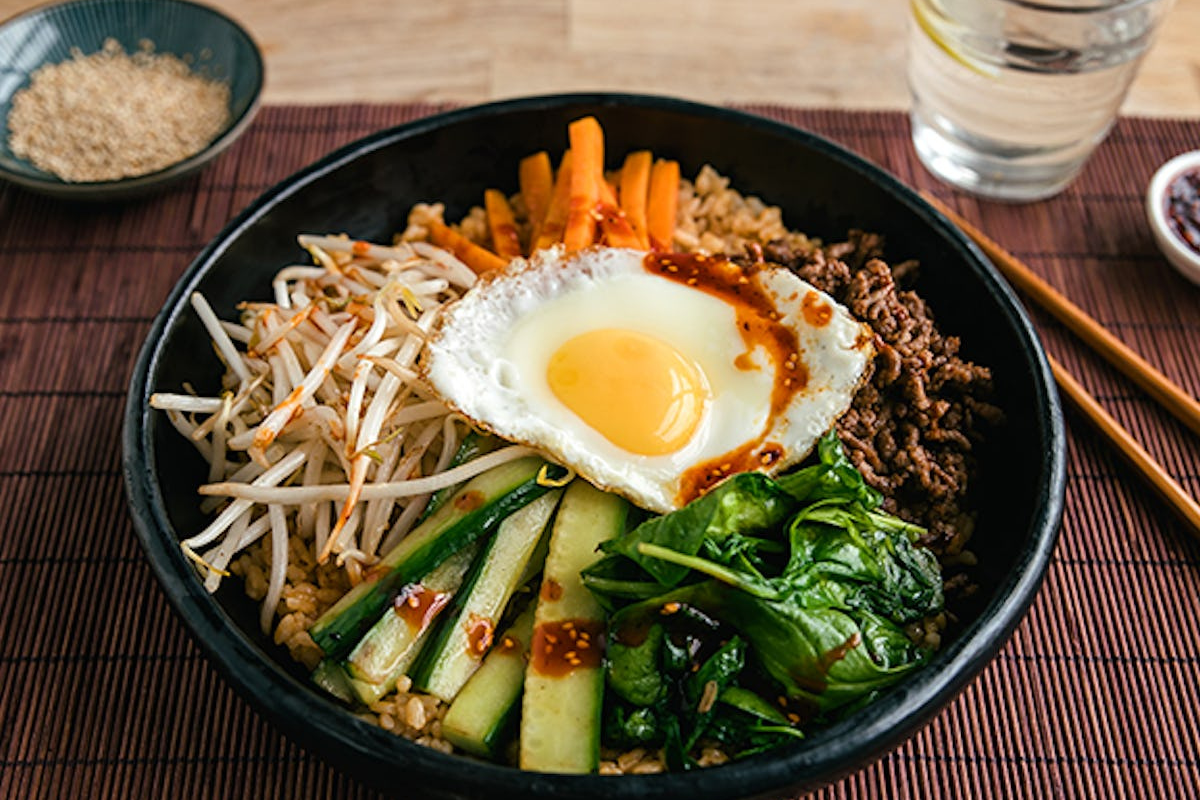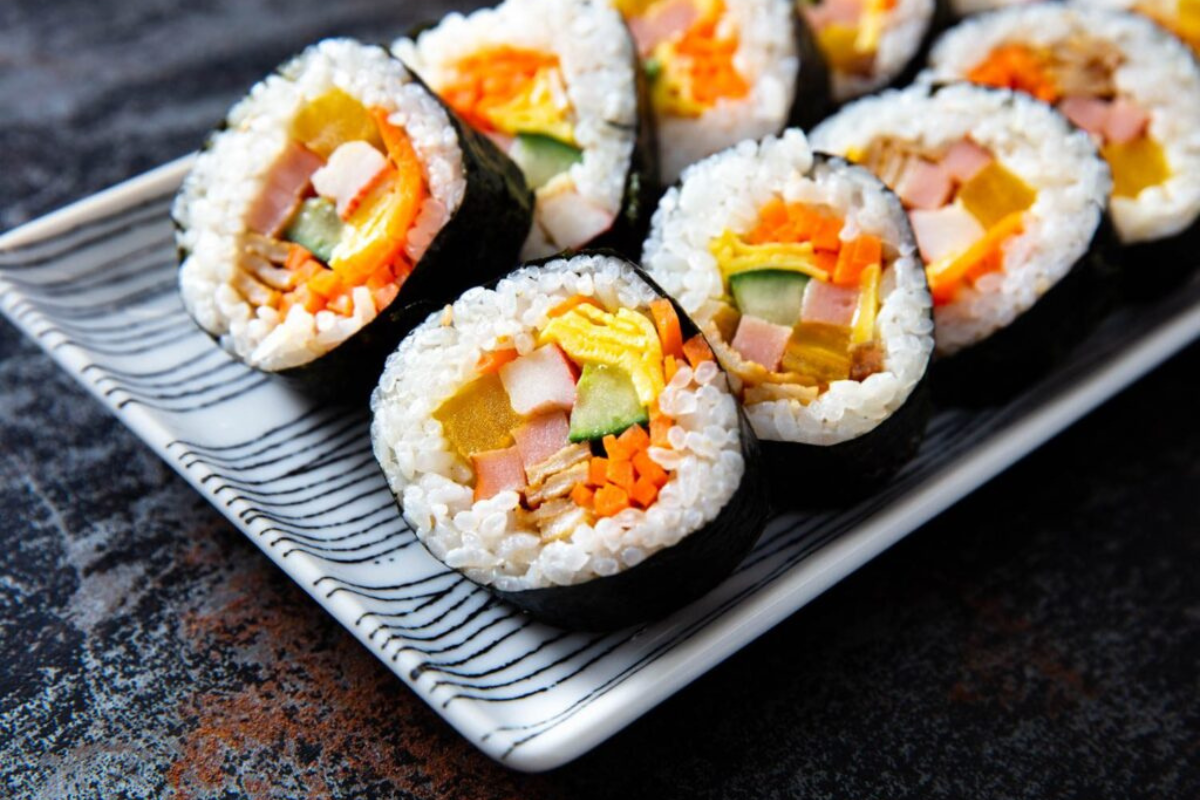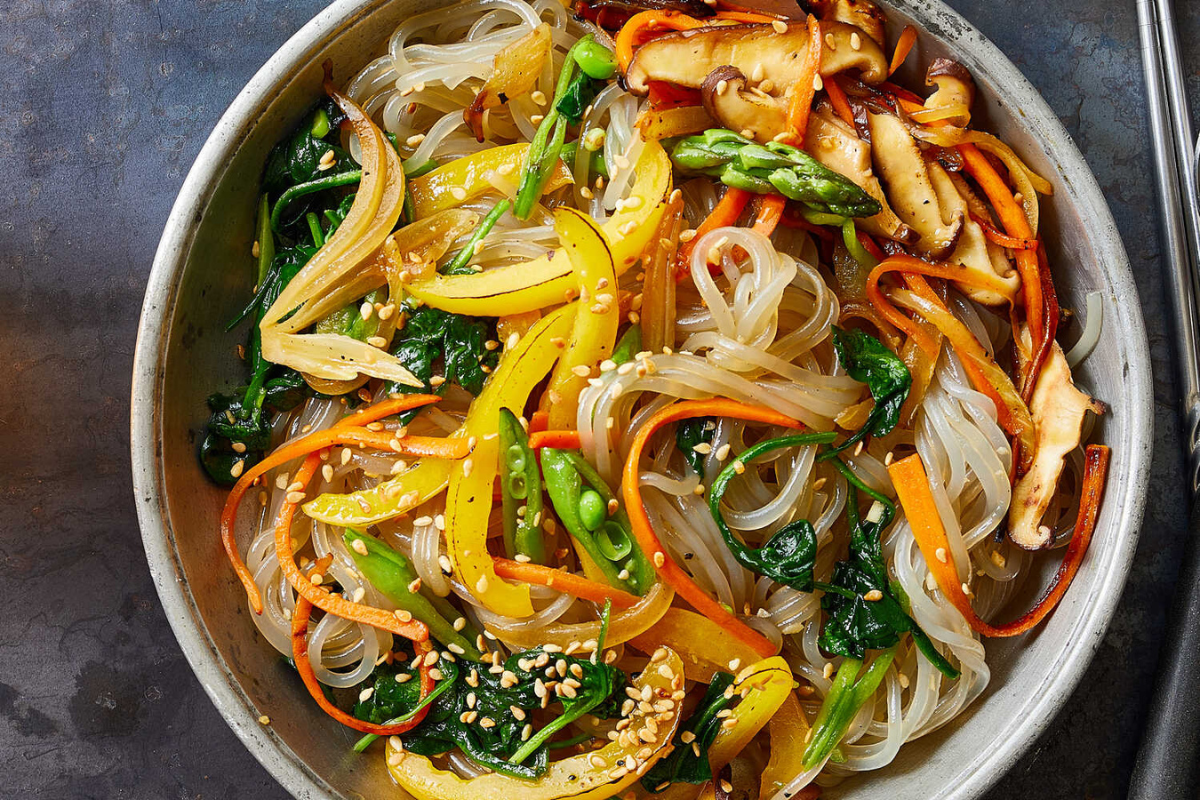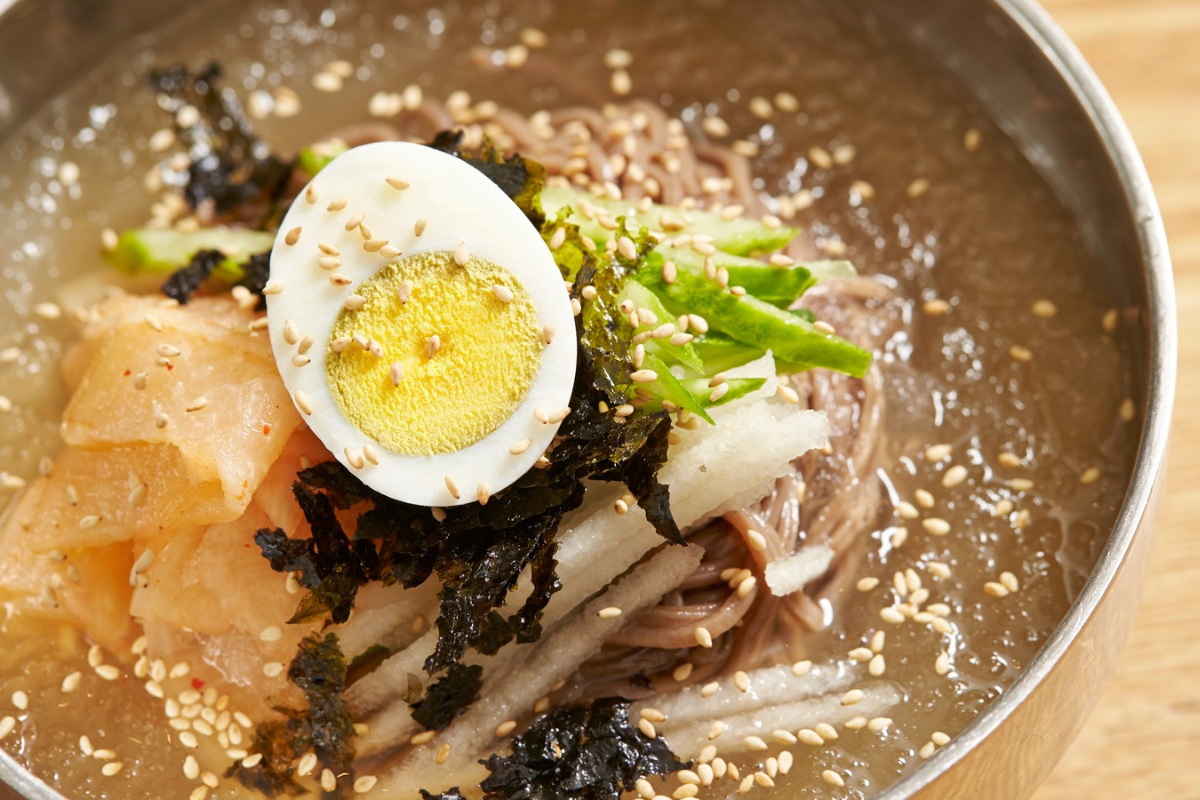Young people all across the world are familiar with Korean food because of its richness and diversity. Korean food is aesthetically pleasing with a deep flavor, high nutrients, and low fat. As a result, Korean food is still well-known worldwide, having a lot of really traditional dishes with distinct Asian cultural elements.
1. Bibimbap: A typical mixed rice in Korea

Photo: Simply Cook
A classic cuisine from the land of Kimchi, Bibimbap is a Korean mixed rice dish that is served with rice, veggies, and meat. It may be said that Korean mixed rice not only has an attractive appearance but also ensures the nutritional balance of a meal due to the fact it contains meat, which gives protein, minerals, and fiber, along with a variety of stir-fried veggies called Namul. Mixed rice is known as a nutritious meal all over the world thanks to its balance of nutrients.
A popular dish in Korean cuisine, Bibimbap has robust flavors that appeal to a wide audience. This meal is not only visually appealing and tasty, but it also has the ideal balance of flavors and nutrients. For this reason, mixed rice is said to be the “soul” of Korean cooking.
2. Gimbap: Famous and delicious long-standing seaweed rice rolls

Photo: Valuable Kitchen
Gimbap or Korean rice rolls, is a well-known meal that is gaining popularity in many nations. This meal is a good partner for outdoor picnics, celebrations, and light lunches. This cuisine not only reflects the culture and mentality of the Korean people, but it is also aesthetically pleasing. Making authentic Korean rice rolls is not complicated because this dish is a combination of simple ingredients.
In Korean cuisine, rice rolls are a staple meal including seaweed leaves firmly folded with rice and ingredients. The filling will frequently be sausage, crab sticks, fried eggs, and vegetables that give the rice roll a beautiful color when cutting.
This meal may be made ahead of time for outdoor gatherings like picnics and celebrations, or it can be enjoyed as a light lunch with loved ones and kimchi on the side. As a result of its mobility, Korean rice rolls are well-known as a popular convenience dish in Korea and other nations.
3. Japchae: A famous and rustic Korean mixed vermicelli

Photo: NY Times
Japchae, a well-known Korean mixed vermicelli, is made with basic, rustic ingredients that have a wonderful flavor. The light brown color of Japchae vermicelli, which comes from the sesame oil, contrasts nicely with the red hue of carrots, the dark brown of shiitake mushrooms, and the red-brown of beef. This tasty Korean food has evolved into a colorful artwork that makes you want to eat it immediately upon viewing it.
Seasonal vegetables, including thinly sliced carrots, onions, spinach, mushrooms, and pork, are used to make Japchae vermicelli. Sesame seeds, chili, and soy sauce are the primary seasonings. You can eat japchae hot or cold, according to your taste. Specifically, this meal tastes well when it isn’t overly hot. As a result, it has emerged as one of the most delectable Korean meals.
Japchae cold noodles have recently evolved into a particular traditional meal that all Korean families make to please visitors. This Japchae mixed vermicelli meal requires a lot of work and passion from the cook even if the materials are relatively basic. It will draw in friends and visitors from all over the world to Korea.
4. Naengmyeon: Ideal cold noodles for hot days

Photo: Tasting Table
The most popular summertime cuisine in Korea is Naengmyeon cold noodles, which is a characteristic dish throughout the Korean peninsula, both the North and the South, given that this noodle dish helps to counteract the summer’s heat. Specifically, vibrant shades of green, red, purple, and yellow are frequently found in cold noodle meals. In contrast to other winter noodles, which tend to have quite monotonous colors, Koreans frequently color their cold noodles in vibrant, striking hues.
Naengmyeon is served in a large stainless steel bowl with cold broth, and julienned cucumber, presented with Korean pear slices. Cold noodles in Korea can be stir-fried vermicelli, or fried noodles with cool and refreshing broth, which all have the same characteristics of thin noodles, light taste, not bloating, served with with cooling foods such as green beans, black beans, bean sprouts, thinly sliced pickled Korean white radish, adding boiled eggs or beef slices.
In addition, vinegar and hot mustard sauce are frequently utilized prior to eating. Traditionally, long noodles are eaten without cutting as they represent health and life.

